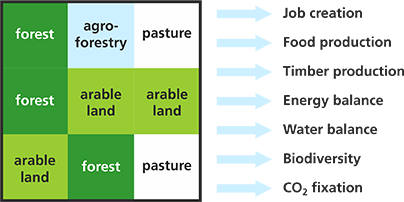Competition for resources
← Scroll for more →
Sub-sahara Africa is one of the poorest regions globally. Especially the rural population lacks economic opportunities.
At the same time the population growth in this region is higher than anywhere else in the world leading to increased pressure on natural resources and increasing demand for ecosystem service provision.
For example, the South African population has increased more than 200 % since the 1960s. At the same time the demand for resources has increased exponentially. Paper consumption has for instance increased by 600 %.

With increasing population and large areas of land being marginal for production of agricultural goods, land is getting an increasingly scarce resource and efficient planning and management are more important than ever to ensure sustainability.



